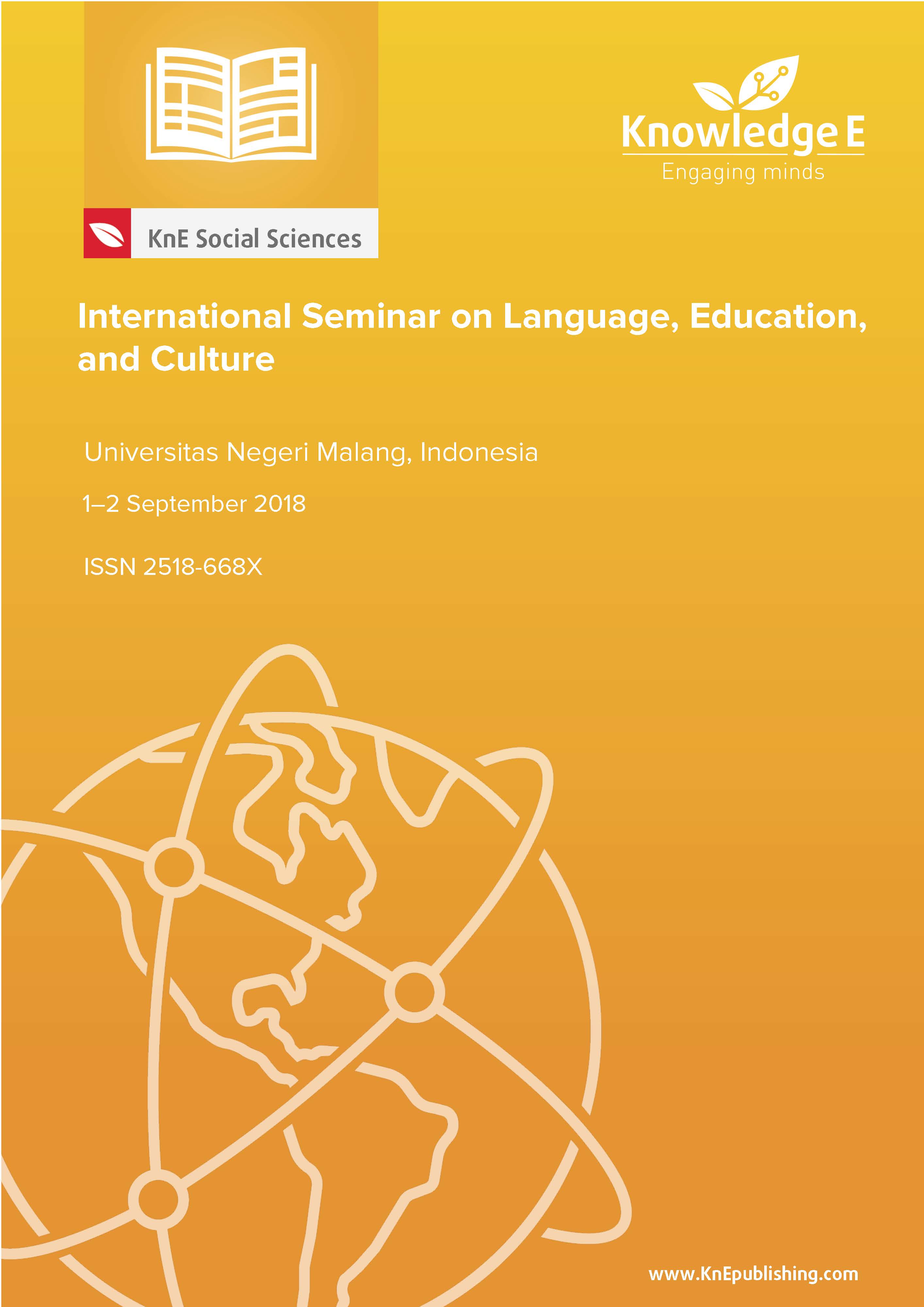Incorporating Ethnopoetic in English As a Foreign Language (EFL) Classroom
DOI:
https://doi.org/10.18502/kss.v3i10.3906Abstract
This paper presents the role of etnopoetic in the form of verbal art performance like parikan and kidungan, in Javanese context, in the teaching and learning process. Parikan which is rich of character value can be used as a path way to convey moral messages to our students as well as to arouse their affective domain as stated in the curriculum 2013. The existence of etnopoetic like folklore, nursery rhyme, parikan and kidungan is expected to be able to maintain our local wisdom in the areas of education specifically in the teaching English as a Foreign Language. This paper also elaborates how the teacher employs this verbal art performance in the form of Folklore, nursery rhyme, folklore, parikan and kidungan as a part of building students character in EFL classroom by using these following stages: first, building knowledge of field; second, modeling of poetry text; third, ganre analysis; fourth, implied meaning of poetry; fifth, continuation and implementation.
Keywords: incorporating, ethnopoetic, EFL classroom
References
Anderson, M. 1997. Text Type in English 3, South Yarra: Macmillan Education Australia PTY LTD.
Akhiyat, 2016. Tradisi Perkawinan Loro Pangkon Studi masyarakat Muslim Jawa Timur. UIN Sunan Ampel Surabaya. Disertasi yang tidak dipublikasikan
Baswedan. A. 2017. Membangun Karakter Bangsa. https://www.youtube.com/ watch?v=CsXPPt9Id74. Retrive on July 2
Cahyono. B. Y. 2010.Nursery Rhyme. Malang: University of Malang Press.
Hirsch.Jr., ED., Kett. F. J., and Trefil. J.2002. The New Dictionary of Cultural Literacy, What Every American Needs to Know. (First edition). New York: Houghton Miflin Company.
Kementrian Pendidikan dan Kebudayaan (2014). Modul Pelatihan Implementasi Kurikulum 2013 SMP Bahasa Inggris. Badan Pengembangan Sumberdaya Manusia Pendidikan dan Kebudayaan dan Penjaminan Mutu Pendidikan Kementrian Pendidikan dan Kebudayaan.
Kadarisman,E. 2009. Berkenalan dengan Etnopuitika. Malang: Universitas Negeri Malang Press.
Kadarisman, E. 2009. Dari Etnopuitika ke Linguistik. Malang: Universitas Negeri Malang Press.
Kenney. W. 1966. How to Analyze Fiction, Poetry, and Drama. New York: Monarch Press.
Khoiriyah. 2010. Teaching Narrative Text of Various Kind in English. In Cahyono (Ed.). Teaching English by Using Various text Type. Malang: University of Malang Press.
Nugroho. W. 2017. Kumpulan Kidungan Arek Suroboyo.
Slavin, R. E. (1994). Educational Psychology. Massachusetts: A Division of Paramount Publishing.
Webster. K. A. and Kroskrity. V. P. 2013. Introducing Ethnopoetics: Hymes’s Legacy. Journal of Folklore Research Vol. 50, No. 1-3, Special Triple Issue: Ethnopoetics, Narrative Inequality, and Voice: The Legacy of Dell Hymes ( January/December 2013), pp. 1-11. Retrieved on the 1

